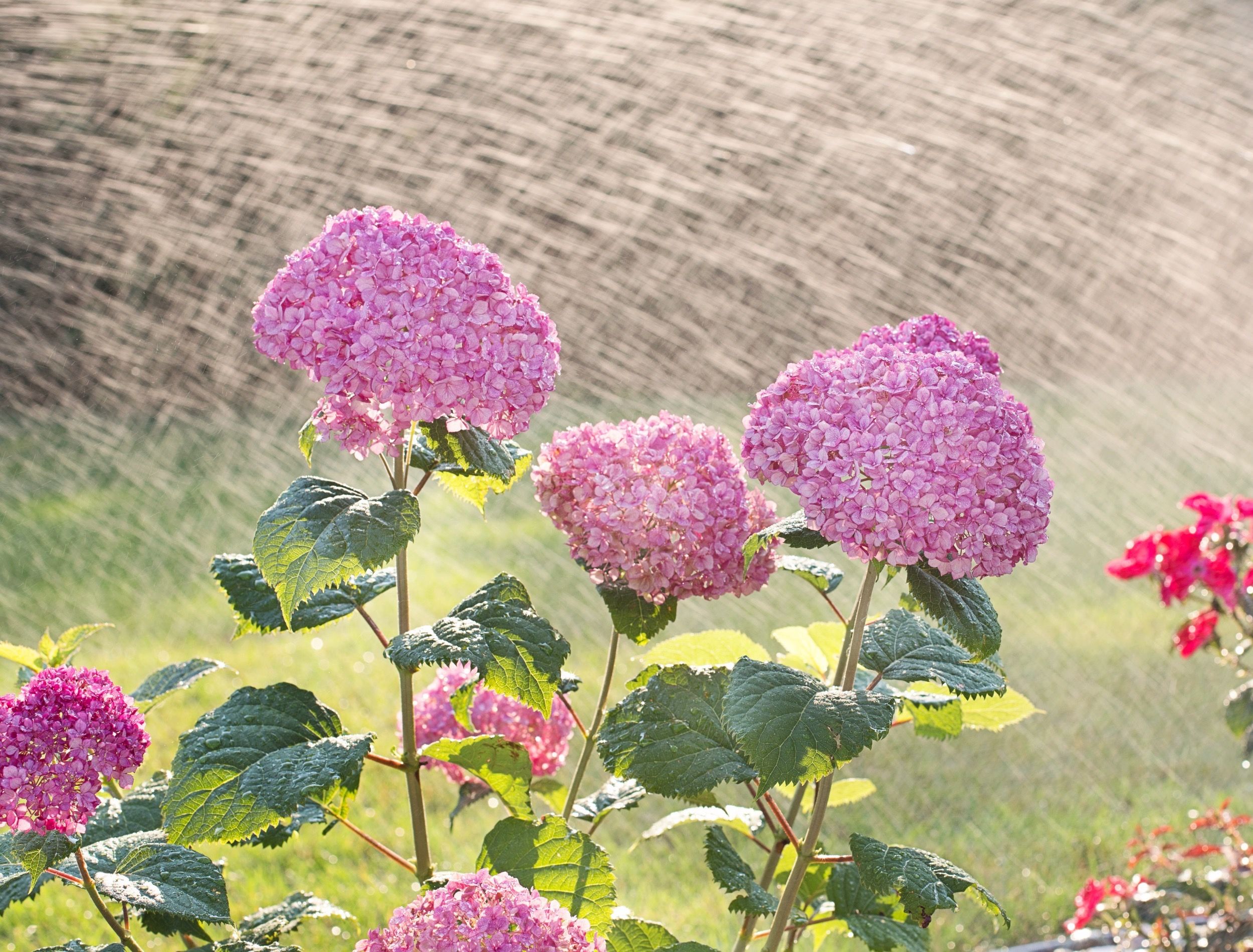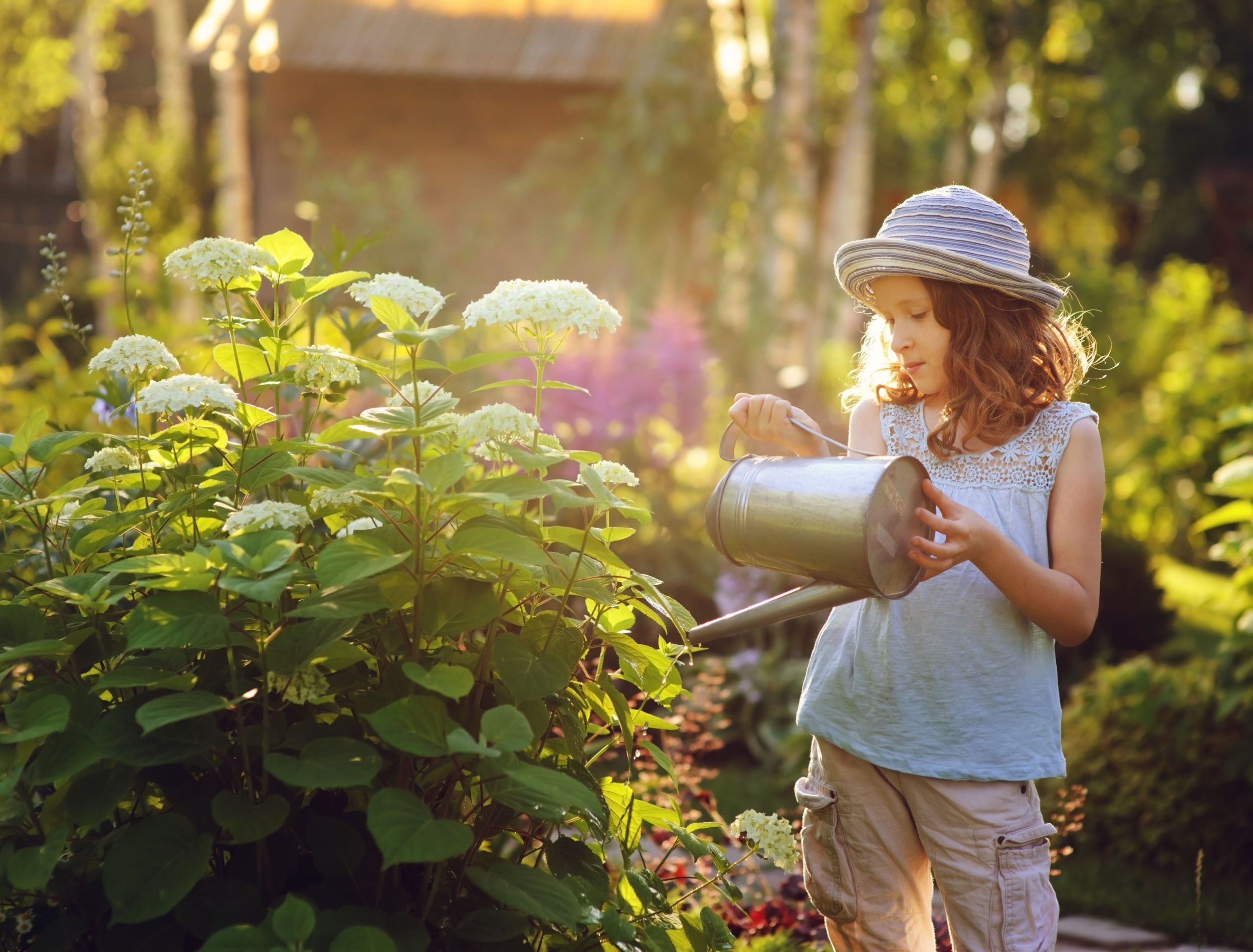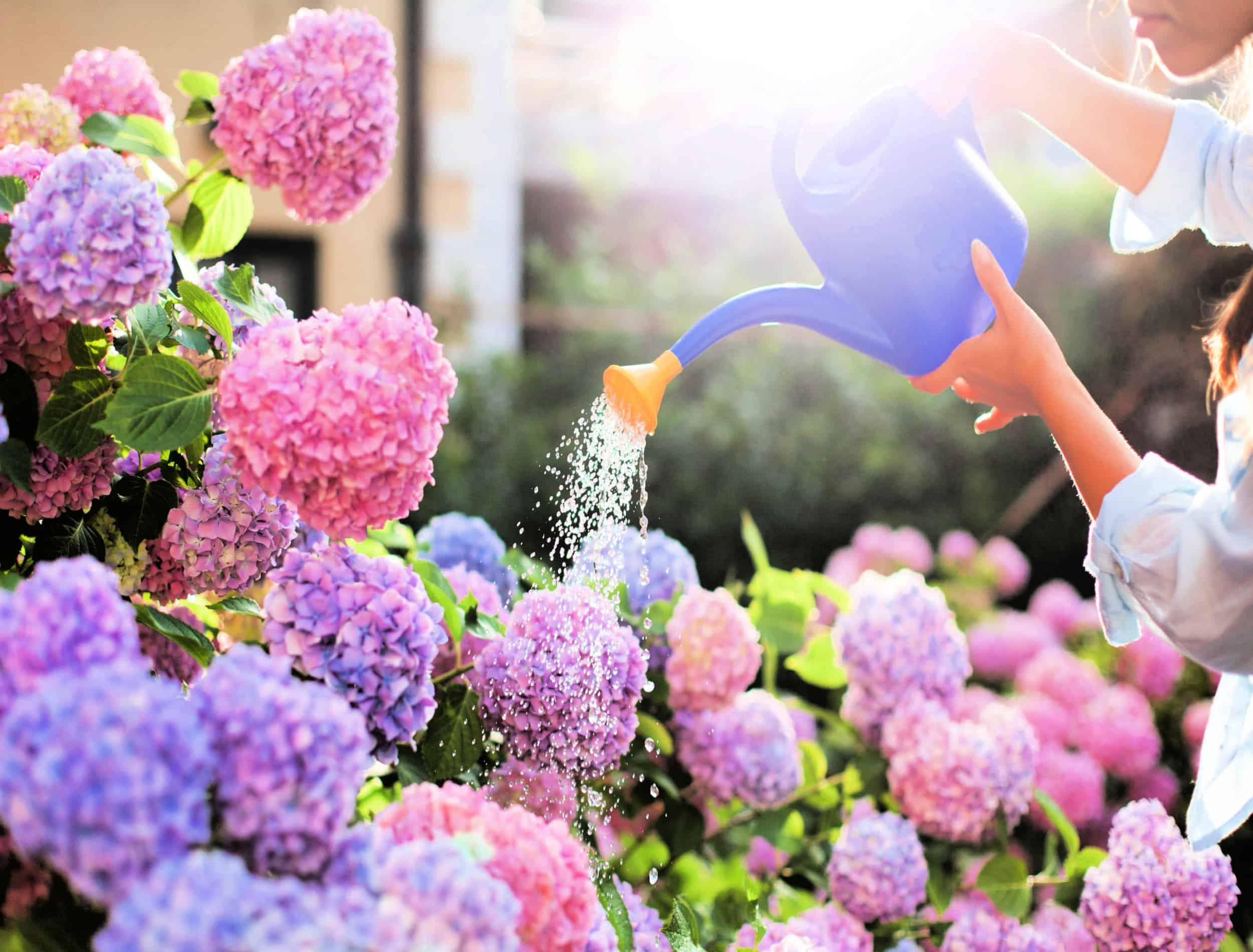Hydrangeas are popular for their beautiful clusters of white, purple, pink, red, or blue flowers that appear in late spring and summer. However, these lovely blooms require some maintenance to thrive. One of the most important tasks as a hydrangea owner is correctly watering the flower.
Discover how much water your hydrangeas need, how often you should water them, and other watering tips so you can watch them bloom with pride throughout the season!
How Often Should You Water Hydrangeas?
Image credits: Maria Evseyevavia Shutterstock
Hydrangeas are one of the most beautiful flowering shrubs out there, with their colorful blooms and lush foliage. But how often should you water hydrangeas to keep those blooms bright and thriving?
Like many plants, the amount of water a hydrangea needs depends on its age and location. New or young hydrangeas need more frequent watering than those that have been established in the ground for some time.
Water your hydrangeas when the top 1 inch of soil is dry. Check the soil once a week to ensure you're not overwatering. Hydrangeas need 1 inch of water per week, either through rainwater or manually via hand-watering. If your hydrangea is in a pot or a spot in your garden with a lot of sun, it may need more frequent watering. Plants in containers and subject to afternoon sun dry out faster than those in the ground.
Monitor your hydrangea for signs of drought stress. These include wilting leaves and stems, browning foliage, and sparse blooms. If you spot these issues, wait and see if they bounce back. It's normal for some plants to wither in the hot afternoon sun. If they don't bounce back by the next day, give your plant a good drink of water.
Watering Tips
Image credits: Marina Andrejchenko via Shutterstock
Watering your hydrangeas is the key to keeping them healthy and vibrant. But it isn't as simple as just pouring water on the plant.
Drainage
First, ensure that all your beds or containers have plenty of drainage. You don't want your plants sitting in standing water -- this leads to serious problems! If you're unsure how much water is actually in the soil, a soil moisture meter is an invaluable tool to gauge moisture levels quickly and accurately.
Drip Irrigation System
While you don't want to overwater, regular irrigation is necessary for optimal growth. One way to ensure your plants get the perfect amount of water every time? A drip irrigation system!
Drip irrigation is an efficient way to water your garden without worrying about over or underwatering it. Drip systems deliver small amounts of water directly to the roots of your plants regularly, mimicking nature's slow and steady rain showers.
Not only does drip irrigation ensure that your plants get the exact amount of water they need, but it also helps keep moisture consistent and even during dry spells. So, during a heat wave or drought, you don't have to worry as much about your hydrangeas drying out.
Soil Type
When it comes to keeping your hydrangeas healthy, one of the most important things to remember is to avoid overwatering. Too much water causes root rot and fungal diseases, leaving plants limp and lifeless.
Take into consideration the type of soil. Clay soils retain more moisture than sandy soils, so you won't need to water as often if you have clay soil.
Water Deeply
Water your hydrangeas 8 to 10 inches into the soil so that the water soaks deep into the roots. Hydrangeas have extensive root systems; you need to water them deeply, not just sprinkle some water on the surface.
Watering deeply encourages the roots to grow deep into the soil to seek moisture, which helps the plants establish a strong root system and become more drought-tolerant. Shallow watering keeps the roots near the surface, where they are prone to drying out quickly.
Use Mulch
Adding mulch to your garden is an easy way to ensure that your hydrangeas have the best possible environment for thriving. The roots of hydrangeas require adequate moisture to thrive, and mulching helps reduce the amount of water lost to evaporation, ensuring that the plants have a steady water supply. Mulch also acts as a natural weed suppressant, keeping weeds at bay and reducing competition for nutrients and water. It's a simple gardening hack that makes all the difference in how well your hydrangeas grow!
When selecting a type of mulch for use around your hydrangeas, organic options are typically preferable. Leaves, grass clippings, straw, or even compost work well as mulches.
However, leave a small gap between the base of the plant and the mulch. Doing so allows for proper air circulation and prevents excess moisture accumulation around the plant's base. A layer of 3 to 5 inches of mulch provides the abovementioned benefits.
Avoid Overhead Watering
Overhead watering of hydrangeas causes several problems that negatively affect the health and growth of the plant. Hydrangeas are susceptible to various diseases, and wet leaves make them more vulnerable to these diseases. Water on the leaves and flowers creates a humid environment that encourages fungal growth, leading to diseases like powdery mildew or gray mold.
Another issue with overhead watering is that it leads to uneven water distribution. The water may not reach the roots of the plant, which causes dehydration.
Got Your Watering Can Ready?
With proper hydration and care, hydrangeas make magnificent additions to your garden. Though hydrangeas may require a bit of extra attention when it comes to watering, these beautiful blooms are certainly worth the effort. If you follow the tips provided, you can watch your plants bloom with a radiant display!
Don't forget to leave a comment below and share your experiences with hydrangea care with family and friends. Together, you can all bring out the best beauty from these gorgeous flowers.



